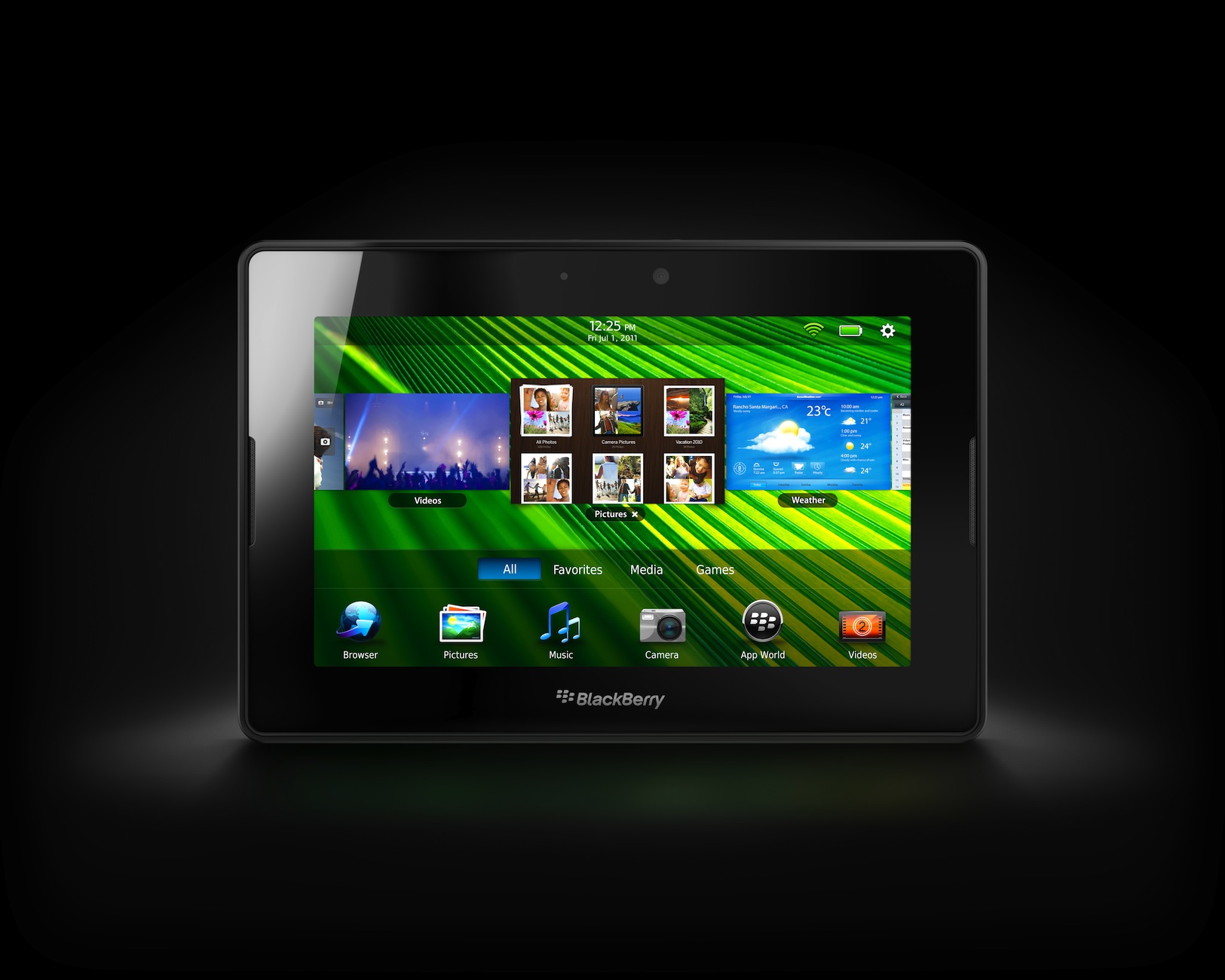We recently has our hands on the new Blackberry Playbook, which is a new tablet style of device. As a tablet, comparisons will inevitably be made with Apple’s iPad.
The Playbook is somewhat smaller than the iPad, and it comes with a nice little sleeve case which will protect it as you are carrying it around. It’s smaller size may be viewed as an advantage by many, as it can easily fit into larger pockets (like jacket pockets) whereas with the iPad, you pretty well need to always have to carry it around in your hands, or in a briefcase, backpack, or similar.
The basics of the Playbook are very nice: the hardware feels very well constructed and solid, and it has a very nice feel of quality about it. The screen is bright and colourful, with good contrast, which makes it easy enough to read for those of us with degraded eyesight. The user interface, too is very nice, with some nice and elegant features.
In use, most activities will be engaged through either dragging, or tapping on the screen: tapping to load and run an app, for instance, or dragging from the bottom edge of the device to bring up the menu. The user interface has been well thought out and well designed.
I have two main criticisms of the Playbook, however. The first one is that there’s not a whole lot of applications available for it, as yet. RIM, the people who make the Playbook, are trying very hard to rectify this issue, and have been spending a lot of time encouraging developers to get onto their developers’ program and create applications for the device. The problem here is that developers like to see some return for their work, and because there’s not yet a big market for Playbooks, there’s not a lot of demand for any apps they may create. So they don’t support platform, meaning that the market has to overcome some serious inertia in order to start generating greater levels of interest from all concerned parties.
The second criticism is that the Playbook does not come with the ability to directly access the internet over the mobile phone system while its user may be out and about.
This facility has given the iPad great power and flexibility, as iPad users can use their device virtually anywhere they have a phone signal. This is not the case with the Playbook, which needs some form of external internet connection in order for it to be fully functional. While it may be argued that this is no different from the WiFi only iPad, the fact remains that having a direct internet connection for your pad is a great to make the device more usable and user friendly.
